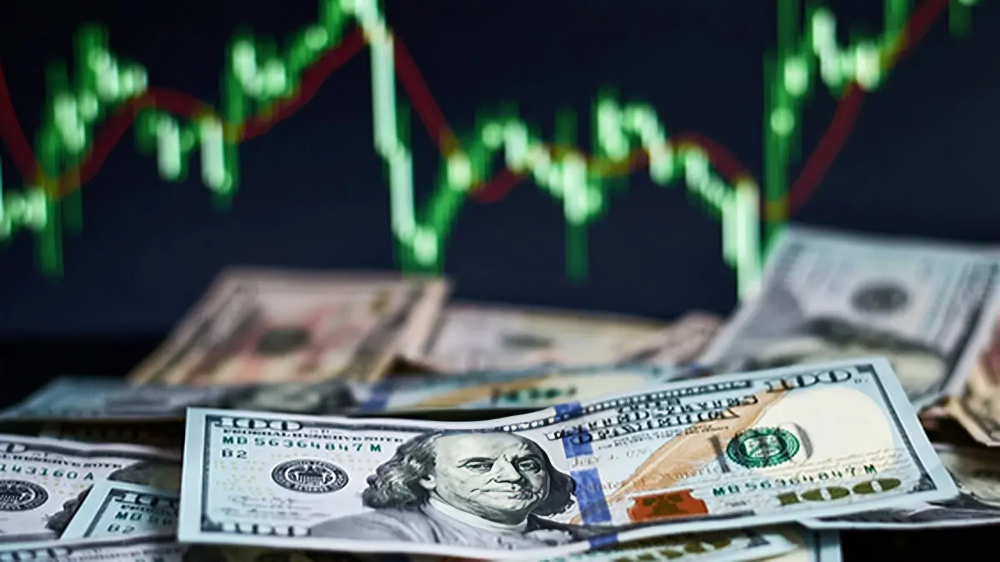The global financial order is witnessing a historic shift. For decades, the US dollar has been the undisputed king of currencies — the go-to asset in times of crisis, the world’s reserve currency, and the preferred unit for global trade. But 2025 is telling a different story.
Amid unpredictable US trade policies, rising geopolitical risks, and a weakening US economy, investors are increasingly shifting toward the euro. Data from the Depository Trust & Clearing Corporation (DTCC) shows that 15% to 30% of global dollar-based contracts have moved toward euro-denominated contracts in just the first five months of this year.
The euro’s new-found strength is being viewed not just as a trade anomaly, but as a potential long-term shift in global currency dynamics.
Let’s break down what’s happening, why the dollar is slipping, and what this means for global investors and emerging markets like India.
1️⃣ Why Is the Euro Gaining Ground?
Shift in Trading Volumes
The $7.5 trillion-a-day global currency market has always been dominated by the dollar. However, Bloomberg data shows that between January and May 2025:
- 15%-30% of dollar contracts shifted to the euro.
- The euro is increasingly being used for hedging and large bets on currency swings.
Why? Because investors are actively avoiding the dollar due to increasing US policy unpredictability and global trade war risks.
The Euro as a Safe Haven
Traditionally, when markets get volatile, traders rush to the dollar. That’s changing. Now:

- The euro is replacing the dollar in many risk-averse trades.
- Volatility in euro-yen pairs is the lowest in four years relative to the more volatile dollar-yen trades.
This marks a clear shift in market confidence. As BNP’s Oliver Brennan put it, “We could be moving to an environment in which euro pairs drive everything.”
Billions in European Stimulus Fuel Confidence
Europe’s economic resurgence is no accident. The European Central Bank (ECB) has been aggressive with stimulus measures, focusing on:
- Green energy transitions
- Infrastructure spending
- Digital innovation funds across Germany, France, and Scandinavia
ECB President Christine Lagarde has openly pushed for strengthening the euro’s global role. With government-backed growth stories, investors are finding safer assets in Europe than in the uncertain US market.
2️⃣ The Dollar’s Decline: Real Facts and Figures
7% Decline So Far in 2025
The US dollar index has fallen more than 7% this year — its steepest drop since 2022.
- Euro vs. Dollar: The euro has surged by 11% in the same period, reaching $1.16, its highest since 2021.
- Hedge fund giant Paul Tudor Jones forecasts another 10% fall in the dollar’s value over the next 12 months.
Tariff Tensions
The main catalyst behind this shift? Trade wars.
- In April 2025, the Biden administration imposed new 20% tariffs on Chinese tech imports.
- Investors immediately sold off dollar assets, fearing global retaliation and rising costs.
While US stocks have managed to rebound slightly, investor trust in the dollar has not.
Rising Costs for Dollar-Based Trades
Another factor pushing traders away from the dollar is cost:
- Implied volatility for dollar-yen trades is now close to 11%.
- For euro-yen trades, volatility is under 9%, making them cheaper hedging options.
For global investors, cost-effective options combined with strong European fundamentals are making the euro a compelling alternative.
3️⃣ Will the Dollar Recover?
The US dollar has been written off before — and come back stronger. Key points to remember:
- The US bond market is still the largest in the world.
- The dollar remains the world’s reserve currency, used in most commodity trades (oil, gold, etc.).
- A return to US exceptionalism — such as tech innovation or geopolitical stability — could restore investor confidence.
However, with the 2026 US presidential elections looming and fiscal debt crossing $35 trillion, the risks remain elevated.
4️⃣ What Does This Mean for Global Markets?
More Currency Competition
The euro is emerging as a viable alternative to the dollar, especially if China’s yuan and India’s rupee continue to rise in influence over the next decade.
Impact on Emerging Markets
For countries like India, a weaker dollar usually brings good news:
- Cheaper imports of crude oil and tech goods
- Stronger capital inflows into Indian equities
- More stability for INR in global trade
However, rising euro strength may lead to import cost increases from Europe, particularly in machinery, pharmaceuticals, and luxury goods.
5️⃣ What Indian Investors Should Do
As an Indian investor, here’s how you can position yourself:
Diversify Globally
Don’t just rely on Indian equities. International mutual funds or ETFs focused on Europe can provide:
- Currency appreciation potential (Euro strength)
- Exposure to European tech, energy, and luxury sectors
Examples:
- iShares MSCI Eurozone ETF (EZU)
- Vanguard FTSE Europe ETF (VGK)
Young Team India Begins Bold 5-Test England Tour


[…] global strength in gold was primarily driven by a drop in the US dollar index, which hovered near a one-week low. This made the precious metal more attractive to holders of […]